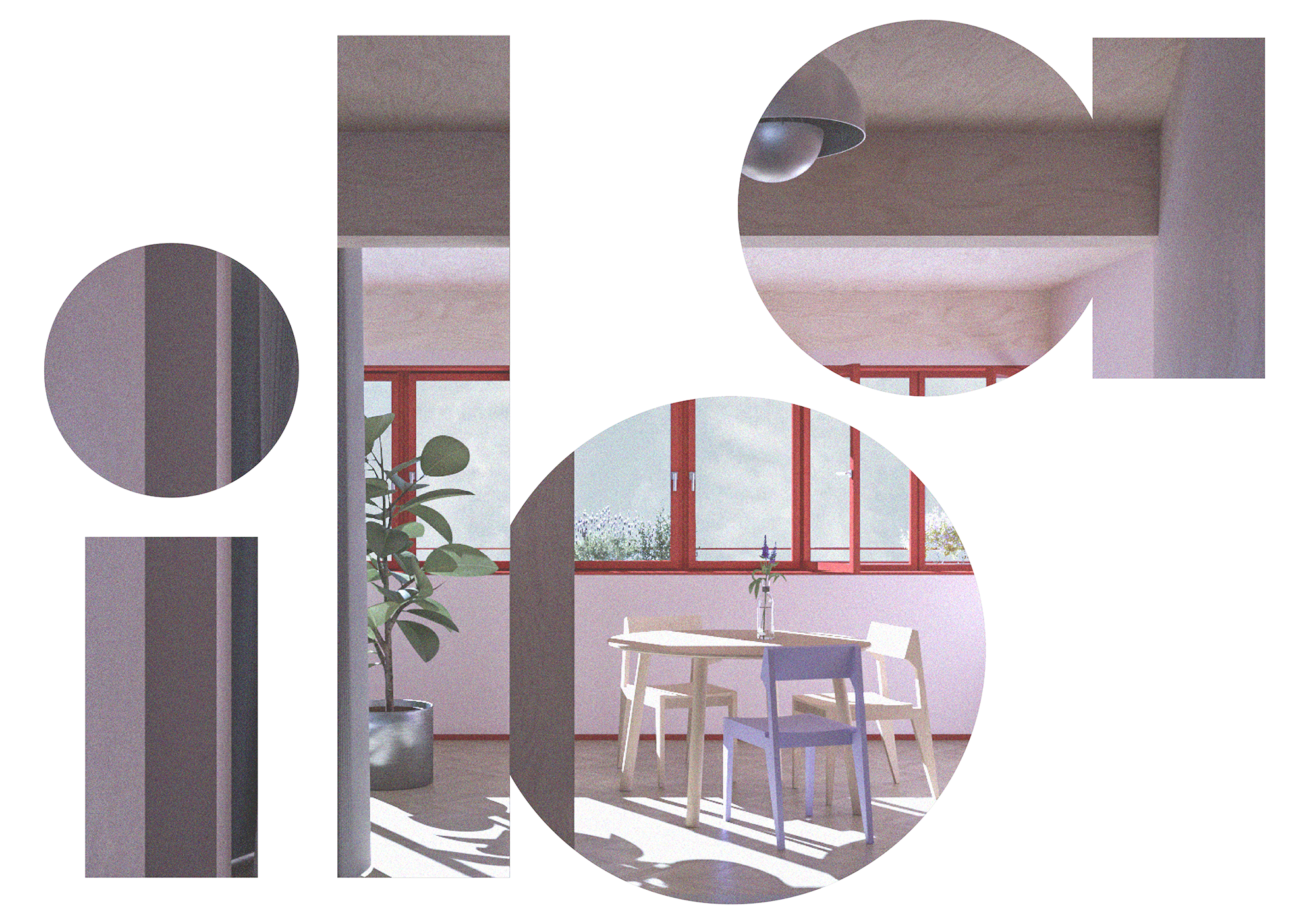Remsriegel

The starting point is the IBA project “Quarter of Generations Schorndorf”. The aim is first a critical examination of the urban design, and later the architectural design and elaboration. How does a 100-meter-long building along the banks of the Rems fit into the urban structure? How can permeability be created while at the same time serving as the strong, space-defining backbone of the quarter? And, more broadly, how do we want to live together in the future?
The Quarter
As part of the International Building Exhibition 2027, Stuttgart Metropolitan Region (IBA’27), the “Quarter of Generations” is being developed in Schorndorf on the site of the former municipal yard – a forward-looking urban district that explores new forms of communal living and working. The design “Remsriegel,” developed within the design studio of the Institute of Architectural Technology – Chair of Architecture and Timber Construction, is an architectural contribution to this urban concept. The studio focused on both architectural expression and constructive detail – down to a scale of 1:5.
The Basis
The starting point was an engagement with the urban design developed by ARGE Schürmann + Witry, Miriam Stümpfel, and Blank Landscape Architects. Within the studio group, we critically examined and discussed the structure, premises, and potential levers for further development. From this, five clusters were defined – our focus: Cluster 3, the “Remsriegel.” A 95-meter-long, five-story building that frames the quarter along the Rems while at the same time functioning as a permeable backbone to the river.
The Remsriegel
The ground floor forms an open plinth zone with publicly accessible uses. These encourage social interaction, enliven the quarter, and provide passage to the river landscape of the Rems. The upper floors accommodate diverse forms of living: shared apartments for students and trainees, family-friendly dwellings, community spaces, and small units for single occupants. The program is complemented by workspaces and flexible apartments at the building’s ends. The roof offers communal spaces, infrastructure for energy generation through bifacial solar panels, and extensive green areas in line with sponge-city principles.
The Construction
A flood-resilient concrete base forms the foundation. Above rises a timber skeleton structure with flexibly placed timber frame walls. Four concrete stairwells provide bracing and access. The ceilings consist of dowelled blockboard elements. The façade features a ventilated, vertically structured timber cladding, set against a red-painted steel structure with balconies on one side and a projecting “shelf” on the other. This structure acts as a buffer zone to Remsgasse, extending the building outward and creating open, adaptable in-between spaces. The house as a wall dissolves and begins to shimmer.
The Goal
Rooftop gardens, communal kitchens, lounge areas, and green spaces along the Rems promote collective living. The goal is a neighborhood that allows and supports diversity – spatially, socially, and ecologically. The Remsriegel does not see itself as a solitary object but as a spatial-structural framework: a flexible setting for varied uses, ways of life, and forms of appropriation.











